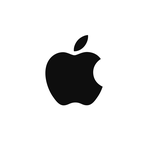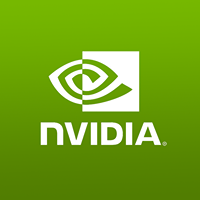Tariff Tango: The Uncertain Dance of Global Trade
April 16, 2025, 3:59 am

Location: United States, California, Fremont
Employees: 10001+
Founded date: 1984
Total raised: $360.05M

Location: United States, California, Cupertino
Employees: 10001+
Founded date: 1976
Total raised: $100M
The world of trade is a complex dance, and right now, the music is playing a chaotic tune. President Donald Trump’s recent tariff exemptions for electronics have sent ripples through global markets, igniting a brief spark of optimism. But beneath the surface, uncertainty looms like a dark cloud, threatening to rain on the parade.
On April 14, 2025, markets around the globe reacted positively to the news of a temporary reprieve from tariffs on electronics. Investors breathed a sigh of relief as the Dow Jones climbed one percent, and the S&P 500 followed suit with a 1.45 percent increase. From Tokyo to Wall Street, traders welcomed the momentary easing of pressure in Trump’s ongoing trade war, which has seen tariffs rise to staggering levels.
But the joy was short-lived. Trump’s words echoed ominously, warning that no country would escape the consequences of what he calls “unfair trade balances.” The President made it clear that while some electronics might be exempt for now, the looming threat of new tariffs on semiconductors and other critical tech goods remains. It’s a classic case of “one step forward, two steps back.”
The global trade landscape has become a battlefield, with the U.S. and China at the forefront. Trump’s tariffs have created a tit-for-tat scenario, with U.S. levies on Chinese goods soaring to 145 percent, while Beijing retaliated with its own 125 percent barrier on American imports. This back-and-forth has left many wondering if anyone will emerge victorious from this trade war. As Chinese leader Xi Jinping aptly noted, there are “no winners” in such a conflict.
The recent tariff exemptions, however, have provided a lifeline for U.S. tech giants like Apple, Nvidia, and Dell. These companies rely heavily on Chinese manufacturing for their products. The temporary relief allows them to breathe easier, but it’s a fragile peace. Trump hinted that the exemptions could be short-lived, as he plans to impose new tariffs on semiconductors—an essential component for everything from smartphones to military technology.
This uncertainty is a double-edged sword. While markets may rally in response to temporary relief, the looming threat of new tariffs creates a climate of anxiety. Investors are caught in a whirlwind, unsure of what the next move will be. The trade war has already begun to take its toll, with fears of an economic downturn growing as the dollar weakens and U.S. government bonds—once a safe haven—are being sold off.
Negotiations are underway, but they feel more like a game of chess than a straightforward discussion. The White House insists that Trump remains optimistic about securing a deal with China, but the ball is in Beijing’s court. The expectation is clear: China must reach out first. Meanwhile, Japan is also feeling the heat, with its automakers facing significant losses due to Trump’s tariffs. Japanese Economic Revitalization Minister Ryosei Akazawa is set to visit Washington, hoping to negotiate a way forward.
The stakes are high. The global economy is like a tightly wound spring, ready to snap. The uncertainty surrounding tariffs and trade policies is causing ripples that extend far beyond the U.S. and China. Countries around the world are watching closely, and many are already opening trade negotiations in anticipation of the 90-day pause on tariffs coming to an end.
The EU is also in the mix, with trade chief Maros Sefcovic expressing a willingness to engage in discussions. A potential “zero-for-zero” tariff offer on industrial goods is on the table, but achieving this will require a concerted effort from both sides. The clock is ticking, and the pressure is mounting.
As the trade war continues to unfold, the question remains: how long can this dance go on? The music may be playing, but the rhythm is unpredictable. Investors are left to navigate a landscape filled with twists and turns, where every announcement can send shockwaves through the market.
In the end, the world of trade is a delicate balance. Tariffs can be both a weapon and a shield. They can protect domestic industries but also stifle growth and innovation. The current situation is a reminder that in the world of global trade, clarity is often elusive.
As we watch this tariff tango unfold, one thing is certain: the dance is far from over. The stakes are high, and the outcome remains uncertain. In this game of brinkmanship, everyone is holding their breath, waiting for the next move. The world is watching, and the future of global trade hangs in the balance.
On April 14, 2025, markets around the globe reacted positively to the news of a temporary reprieve from tariffs on electronics. Investors breathed a sigh of relief as the Dow Jones climbed one percent, and the S&P 500 followed suit with a 1.45 percent increase. From Tokyo to Wall Street, traders welcomed the momentary easing of pressure in Trump’s ongoing trade war, which has seen tariffs rise to staggering levels.
But the joy was short-lived. Trump’s words echoed ominously, warning that no country would escape the consequences of what he calls “unfair trade balances.” The President made it clear that while some electronics might be exempt for now, the looming threat of new tariffs on semiconductors and other critical tech goods remains. It’s a classic case of “one step forward, two steps back.”
The global trade landscape has become a battlefield, with the U.S. and China at the forefront. Trump’s tariffs have created a tit-for-tat scenario, with U.S. levies on Chinese goods soaring to 145 percent, while Beijing retaliated with its own 125 percent barrier on American imports. This back-and-forth has left many wondering if anyone will emerge victorious from this trade war. As Chinese leader Xi Jinping aptly noted, there are “no winners” in such a conflict.
The recent tariff exemptions, however, have provided a lifeline for U.S. tech giants like Apple, Nvidia, and Dell. These companies rely heavily on Chinese manufacturing for their products. The temporary relief allows them to breathe easier, but it’s a fragile peace. Trump hinted that the exemptions could be short-lived, as he plans to impose new tariffs on semiconductors—an essential component for everything from smartphones to military technology.
This uncertainty is a double-edged sword. While markets may rally in response to temporary relief, the looming threat of new tariffs creates a climate of anxiety. Investors are caught in a whirlwind, unsure of what the next move will be. The trade war has already begun to take its toll, with fears of an economic downturn growing as the dollar weakens and U.S. government bonds—once a safe haven—are being sold off.
Negotiations are underway, but they feel more like a game of chess than a straightforward discussion. The White House insists that Trump remains optimistic about securing a deal with China, but the ball is in Beijing’s court. The expectation is clear: China must reach out first. Meanwhile, Japan is also feeling the heat, with its automakers facing significant losses due to Trump’s tariffs. Japanese Economic Revitalization Minister Ryosei Akazawa is set to visit Washington, hoping to negotiate a way forward.
The stakes are high. The global economy is like a tightly wound spring, ready to snap. The uncertainty surrounding tariffs and trade policies is causing ripples that extend far beyond the U.S. and China. Countries around the world are watching closely, and many are already opening trade negotiations in anticipation of the 90-day pause on tariffs coming to an end.
The EU is also in the mix, with trade chief Maros Sefcovic expressing a willingness to engage in discussions. A potential “zero-for-zero” tariff offer on industrial goods is on the table, but achieving this will require a concerted effort from both sides. The clock is ticking, and the pressure is mounting.
As the trade war continues to unfold, the question remains: how long can this dance go on? The music may be playing, but the rhythm is unpredictable. Investors are left to navigate a landscape filled with twists and turns, where every announcement can send shockwaves through the market.
In the end, the world of trade is a delicate balance. Tariffs can be both a weapon and a shield. They can protect domestic industries but also stifle growth and innovation. The current situation is a reminder that in the world of global trade, clarity is often elusive.
As we watch this tariff tango unfold, one thing is certain: the dance is far from over. The stakes are high, and the outcome remains uncertain. In this game of brinkmanship, everyone is holding their breath, waiting for the next move. The world is watching, and the future of global trade hangs in the balance.
